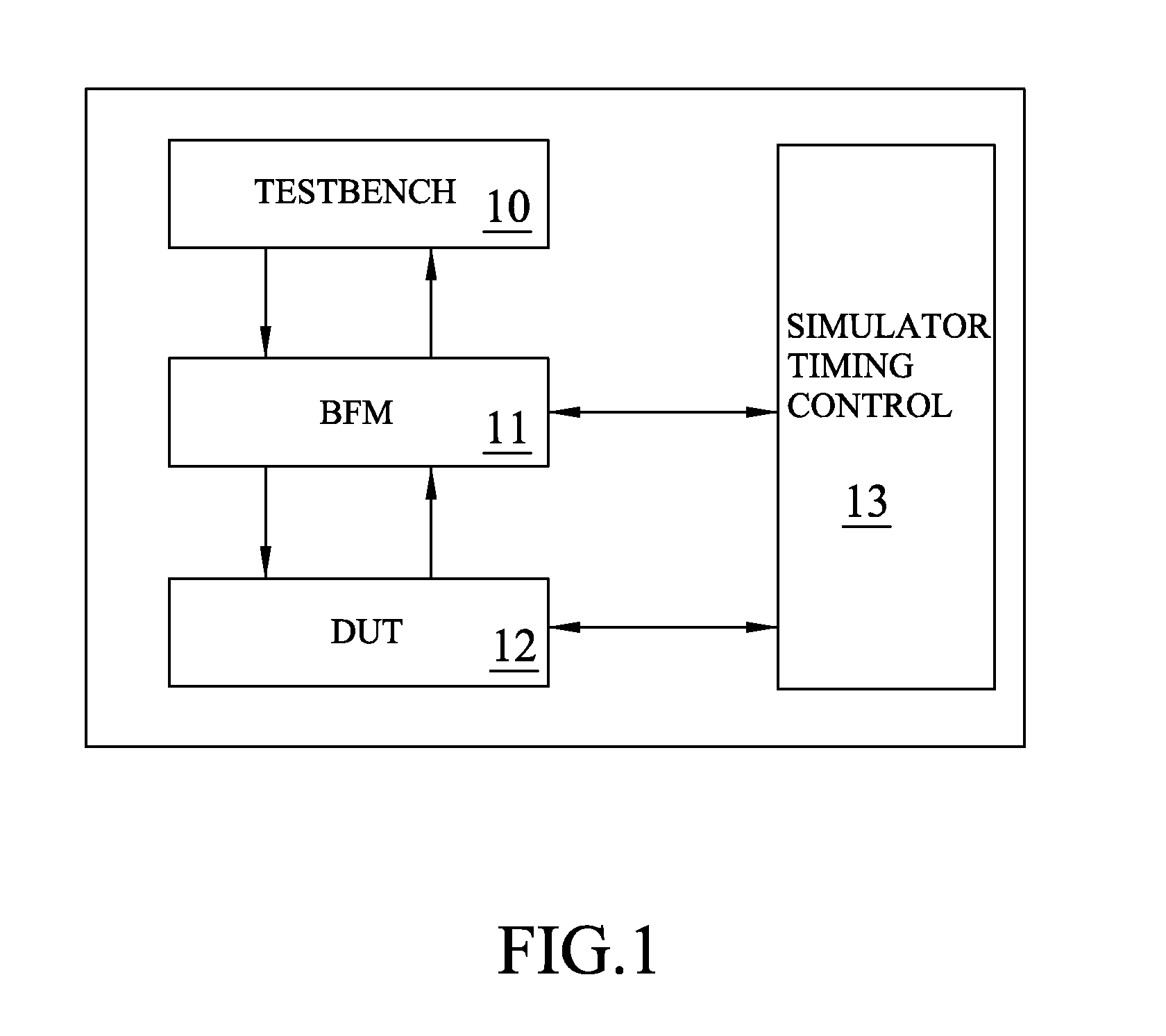Method of recording and replaying call frames for the testbench
a testbench and call frame technology, applied in the field of computer-implemented methods for debugging circuit design with testbench, can solve the problems of insufficient debugging of the testbench, poor performance of users, and difficulty in integrating both hardware debugging and testbench debugging together
- Summary
- Abstract
- Description
- Claims
- Application Information
AI Technical Summary
Benefits of technology
Problems solved by technology
Method used
Image
Examples
Embodiment Construction
[0031]The detailed explanation of the present invention is described as following. The described preferred embodiments are presented for purposes of illustrations and description, and they are not intended to limit the scope of the present invention.
Environment Introduction:
[0032]Firstly, please refer to FIG. 1, which is a schematic block diagram of a typical testbench environment. In order to test a DUT 12, testbench 10 generates test patterns which comprise transactions to a Bus Functional Model (BFM) 11 module. The BFM 11 is responsible for translating the transactions into bus operations to the DUT 12. The BFM 11 also receives the bus operations from DUT 12 and eventually gets back to testbench 10 in order to prepare the next transaction for testing the DUT 12. Please note that only the BFM 11 and the DUT 12 will consume simulation times to emulate the real hardware behavior.
[0033]Simulator timing control 13 will decide when it is necessary to advance the simulation time, simula...
PUM
 Login to View More
Login to View More Abstract
Description
Claims
Application Information
 Login to View More
Login to View More - R&D
- Intellectual Property
- Life Sciences
- Materials
- Tech Scout
- Unparalleled Data Quality
- Higher Quality Content
- 60% Fewer Hallucinations
Browse by: Latest US Patents, China's latest patents, Technical Efficacy Thesaurus, Application Domain, Technology Topic, Popular Technical Reports.
© 2025 PatSnap. All rights reserved.Legal|Privacy policy|Modern Slavery Act Transparency Statement|Sitemap|About US| Contact US: help@patsnap.com



